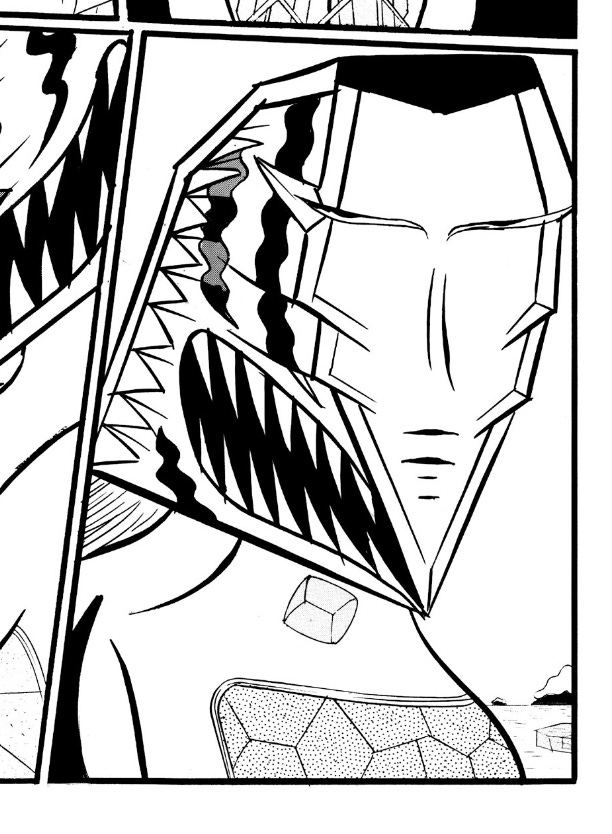Iceland by Yuichi Yokoyama: Driven by Sound and Movement
A manga set in an icy terrain that focus more on its composition and pushes its plot by sound and motion.
I'm not a manga enthusiast. To be frank, I've never fully read a manga in my life till now. My acquaintance was only through very peripheral glances into some manga comics and by watching a few anime adaptations of them. But irrespective of my preference, manga is an artistic form that has taken the comic world by storm. It employs a unique visual style and artistic approach, which makes it pronouncedly distinct from other styles of comics and graphic novels. Also, the heavy reliance on Japanese culture, humor, and social norms makes them stand apart. When I chanced on a copy of 'Iceland' by Yuichi Yokoyama, categorized as neo-manga, I couldn't resist it.
One reason is that it's as different from the conventional manga as they are from conventional comics. 'Iceland' is a uniquely different comic experience that borrows some of its stylistic choices from manga and pushes the boundaries of the genre. It transcends from a regular visual narrative medium to an artistic piece, thanks to the unique style and experimental outlook of the artist Yokohama. It doesn't have a structured plot or well-defined characters. In a petite volume of less than one hundred pages, the author narrates a minimalist story about a bunch of characters searching for a man in an ice-filled landscape.
Contrary to the indication of its title, 'Iceland' isn't set in the country of Iceland but in a cold and punishing place covered in ice. It opens with three people, noticeably new to the area, on the lookout for another person. They interact with some locals, showing his picture to them and speaking with them about unrelated things in the process. The conversations are sparse and most of the time don't directly have any connection with the threadbare plot. When they eventually find the person, he joins them and rides to the airport in a taxi. The narrative feels like a small part of a larger story.
It's not in the plot, but in its art that 'Iceland' scores. The artist uses more geometric shapes in his sketches, and the result is something that resembles cubism. The portrayal of each character reflects this geometric stylization with sharp angles and lines. Each wears unique headgear/masks and projects a supernatural appearance. They lack the exaggerated facial expressions usually seen in manga, but their physicality is sharp and exaggerated. The artist also uses extreme close-ups intermittently, focusing on some part of their face that makes the reader pause his attention on the plot and make sense of what's drawn. The ice-covered landscape is drawn as severe and barren, reflecting the brutish energy emanating from the characters. The man-made structures also have a lack of voluptuous beauty and seem rugged and made with just utility in mind.
Manga usually have a unique style of depicting motion. 'Iceland' builds on this style and takes it to an extreme. It makes motion a frantic activity that creates disturbances in the characters and the reader. He uses abstract lines and patterns liberally in his panels and brings in a dynamic energy at the cost of taking us out of the narrative. Along with movements, the artist gives much prominence to the sounds that it creates. The sounds that are featured in the novel are pronounced and extreme.
When the sounds precede the arrival of a ship or a train or even a taxi, it creates a sense of expectation in the characters and also in the reader. The sound effects are depicted in prominent Japanese script in the middle of the panels, sometimes even covering the action. They are repeated in Roman script in the translation, though in a smaller size, relegated to a corner. In the plot about a search, the constant movements and accompanying sounds push it forward. This depiction creates an effect of pandemonium when the geometric motion lines and onomatopoeia (the script version of sounds) occupy the majority of the panel space and gives an element of mystery and dynamism to the actions, which are otherwise sedate.
'Iceland' is a unique graphic novel that reminds us that in narrative arts, it's not necessary that the plot gets a prominent position. I believe the point of it is to take the reader outside the confines of the plot and look at the composition. It asserts that the composition can become as important or even more than the plot and provide the audience a rewarding experience.








Awesome